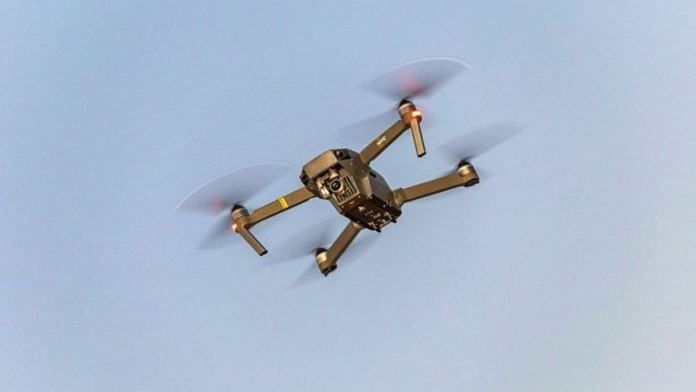Thank you dear subscribers, we are overwhelmed with your response.
Your Turn is a unique section from ThePrint featuring points of view from its subscribers. If you are a subscriber, have a point of view, please send it to us. If not, do subscribe here: https://theprint.in/subscribe/
In the annals of military history, the evolution of warfare has been marked by transformative technological advancements. From the chariots of ancient times to the tanks of the 20th century, each era has seen the emergence of new tools of combat. However, in recent years, the rise of drones has heralded a new chapter in the realm of warfare, challenging the dominance of traditional heavy armour such as main battle tanks (MBTs). Nowhere is this paradigm shift more evident than in the ongoing conflict in Ukraine, where drones have played a pivotal role in reshaping the battlefield and exposing the vulnerabilities of MBTs.
The conflict in Ukraine, which began in 2014, has served as a testing ground for modern military technologies, with both Ukrainian forces and Russian-backed separatists employing a diverse array of weapons and tactics. Among these, drones have emerged as a game-changer, offering a cost-effective and versatile means of reconnaissance, surveillance, and precision strike capabilities.
The use of drones in Ukraine has highlighted several key advantages over traditional MBTs. Firstly, drones provide a level of situational awareness that is unparalleled, allowing commanders to gather real-time intelligence and assess enemy movements with precision. This capability has proven invaluable in a fluid and dynamic conflict environment, where the ability to adapt quickly to changing circumstances is paramount.
Moreover, drones offer a significant advantage in terms of firepower, particularly when equipped with precision-guided munitions. Unlike MBTs, which rely on cumbersome artillery systems and direct line-of-sight engagement, drones can deliver devastating airstrikes with pinpoint accuracy from standoff distances, minimising the risk to friendly forces and civilian populations.
The effectiveness of drones in the Ukrainian conflict has also underscored the limitations of MBTs in modern warfare. Once considered the backbone of armoured warfare, MBTs are now increasingly vulnerable to asymmetric threats such as anti-tank guided missiles (ATGMs) and improvised explosive devices (IEDs). These weapons, which are readily available to insurgent groups and non-state actors, pose a significant threat to heavily armoured vehicles, rendering them increasingly obsolete in certain combat scenarios.
Furthermore, the advent of advanced anti-tank capabilities, coupled with the proliferation of man-portable air defence systems (MAN-PADS), has eroded the once-dominant position of MBTs on the battlefield. In the face of these evolving threats, military planners are being forced to reassess the role of heavy armour in modern conflicts, with some advocating for a shift towards lighter, more agile platforms that are better suited to the demands of 21st-century warfare.
The decline of MBTs in the Ukrainian conflict is emblematic of broader trends in modern military strategy, where the emphasis is increasingly placed on mobility, flexibility, and precision engagement. In this new era of warfare, the ability to project power rapidly and decisively has become paramount, necessitating a reevaluation of traditional concepts of force structure and battlefield tactics.
However, while drones have undoubtedly reshaped the nature of warfare in Ukraine and beyond, their widespread proliferation also raises concerns about the ethical and legal implications of their use. The rise of unmanned aerial vehicles (UAVs) has blurred the lines between combatants and civilians, leading to debates about the morality of remote warfare and the potential for civilian casualties.
Moreover, the asymmetric nature of drone warfare presents unique challenges for military planners, who must contend with the threat of adversary drones equipped with rudimentary weapons systems or employed for reconnaissance and sabotage missions. As such, the development of effective countermeasures and defensive strategies has become a top priority for defence agencies worldwide.
In conclusion, the rise of drones in modern warfare has fundamentally altered the dynamics of conflict, challenging the dominance of traditional heavy armour such as main battle tanks. The ongoing conflict in Ukraine serves as a stark reminder of the vulnerabilities of MBTs in the face of asymmetric threats and the need for militaries to adapt to evolving security challenges. As we look to the future, it is clear that the era of drone warfare is here to stay, reshaping the way wars are fought and won in the 21st century.
These pieces are being published as they have been received – they have not been edited/fact-checked by ThePrint.

